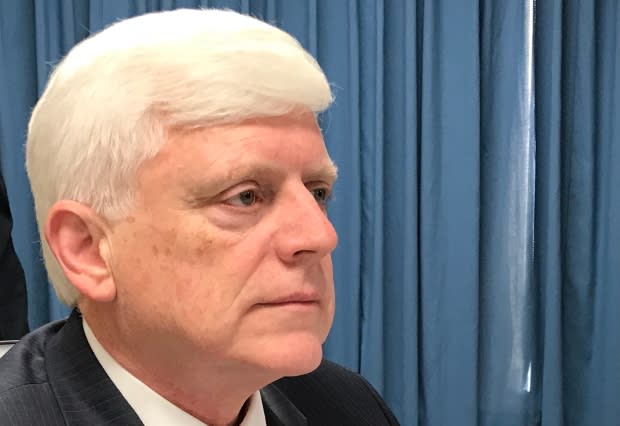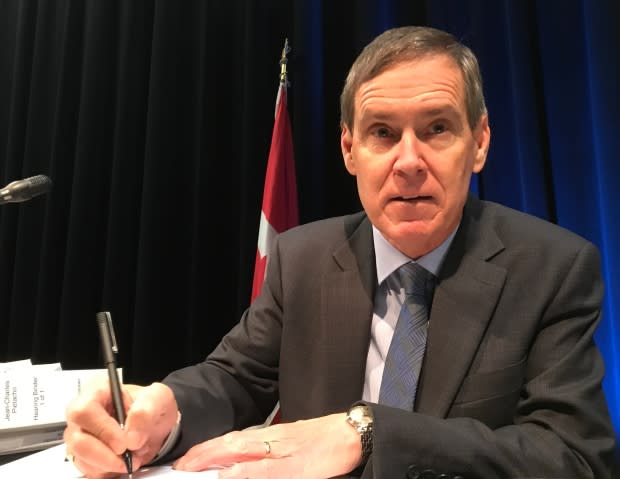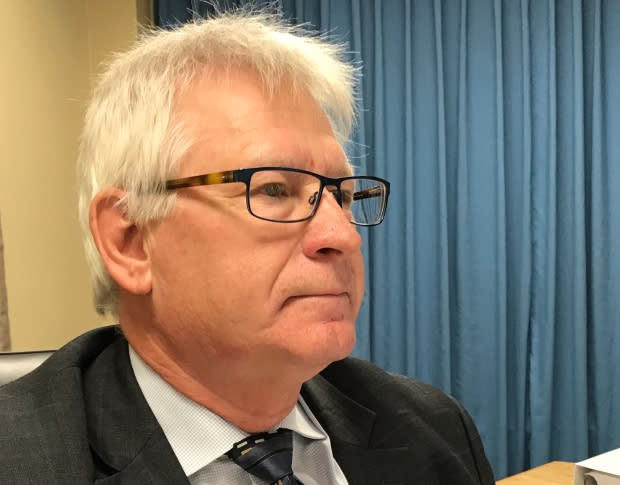Muskrat Falls: A story of unchecked oilmen and their boondoggle hydro project
Muskrat Falls was billed as a strategy to meet the electricity needs of the province of Newfoundland and Labrador with environmental friendly, stable and competitively priced power.
More than six years after it was sanctioned, however, the focus now is trying to complete the project without inflicting any more pain on the province.
It's billions over budget, years behind schedule, and the subject of an ongoing commission of inquiry to determine why.
So why did things go so horribly wrong?
After months of public hearings before Justice Richard LeBlanc, the answer to that very complex question has slowly been stitched together.

And it's not a pretty picture.
Based on my own experience from attending just about every hour of testimony, I have compiled my own top five reasons why Muskrat Falls, to borrow a word from Nalcor CEO Stan Marshall, is a boondoggle:
1. Nalcor's oilmen left unchecked
A 2007 energy plan shepherded by then-premier Danny Williams identified development of the Lower Churchill as a "cornerstone public policy action."

Nalcor was created to lead the effort, and former CEO Ed Martin assembled a team of men with pedigrees primarily in the oil and gas sector, leading to a culture clash with the hydro experts at Newfoundland and Labrador Hydro, a Nalcor subsidiary.

It's now clear Nalcor's team was given an unrestricted leash by its political masters, including what amounts to a blank cheque from the public treasury, to build the generating station at Muskrat and the transmission lines to Churchill Falls and Newfoundland's Avalon Peninsula.
A parade of government witnesses have testified that they trusted the experts at Nalcor, prompting inquiry co-counsel Barry Learmonth to say government leaders were naive and blindly accepting of everything put before them.
We've heard evidence of reports being sanitized to downplay the risks of the project, of risk assessments being removed from the scope of work of at least one reviewer, and of growing frustration among bureaucrats, with one government lawyer describing Nalcor as a fiefdom and the project as a runaway train.
The Public Utilities Board, after intense public backlash, was eventually asked to review the project, but with limited terms of reference and outdated information supplied by Nalcor. The PUB was unable to draw any conclusions.
And in one of the more surreal moments at the inquiry, we learned about the confusion at the very top levels of government in late 2013 as the financing arrangement for the project was formalized.

Muskrat had been sanctioned at a cost of $6.2 billion a year earlier, but the price had grown by $300 million by the time the federal loan guarantee was concluded. But some top cabinet ministers from that era, including then-finance minister Tom Marshall, have testified they were not told of the increase, though there is documentation showing some bureaucrats were in the loop.
Then-premier Kathy Dunderdale testified she "must have known" about the higher number, and believes she was told by Martin, though she couldn't recall a specific meeting or who was in the room.

There are no briefing documents or notes to clear up the confusion, since note-taking was discouraged because there was a fear of leaks, Dunderdale testified.
And while the federal government was receiving regular reports from an "independent engineer" with sometimes troubling warnings about the project, the provincial government had no such arm's-length scrutiny, and was not demanding access to the federal reports.
It's hard to argue the assertion by Learmonth that government oversight of Nalcor was "weak, feeble and limited."
2. An unrealistic cost estimate
In the world of major project construction, it's referred to as the capital cost estimate, and for Muskrat, the public was told the bill would be $6.2 billion. The fact there was another $1.2 billion for interest during construction on top of that was not talked about in the early years of the project.
There's now a mountain of evidence proving this original estimate was an impossible target.

It's obvious Martin and Nalcor went to extremes to keep the estimate as low as possible. I'll leave it to LeBlanc to make a finding on why this was the case.
Nalcor, for example, used a probability factor of 50 when determining its tactical contingency of $368 million, which in simple terms means there's a 50 per cent chance of overruns.
Several expert witnesses have criticized this high-risk approach for a publicly funded project, with one saying it was "bad practice."
If Nalcor had selected a higher confidence level, such as P90, it would have required a contingency of more than $1 billion, and a higher capital cost estimate.
A recommendation from a risk expert that Nalcor include a $500-million strategic risk allowance in its costs estimate was also ignored, because the province had committed to funding any cost overruns as one of the conditions of the federal loan guarantee.
So what might the public's reaction have been in 2012 if the provincial government had attempted to sanction Muskrat at a cost of $8 billion or $9 billion? And at that price, would Nova Scotia's Emera have agreed to a partnership and construction of the Maritime Link subsea cable beneath the Cabot Strait?
We'll never know the answer.
3. Nalcor knows better
In 2011, Nalcor hired Quebec engineering and construction management giant SNC-Lavalin to oversee the project. But the relationship quickly turned sour, with Nalcor eventually stripping SNC of its leadership role and establishing what's known as joint-management teams.
Witnesses for Nalcor have testified that SNC was performing poorly, while SNC witnesses have said Nalcor micro-managed the project and that SNC personnel were treated like "slaves."

Norman Bechard, a veteran manager of major project construction, was hired by SNC as project director.
He said he "felt useless" and said seasoned, world-class experts with the Quebec firm were replaced with personnel who lacked the proper experience for such a massive and complex project.
Bechard offered some harsh criticism of Nalcor, including its commitment to risk management.
SNC has a long history of developing hydro projects, and Bechard said he came to Labrador after leading a project for Hydro-Québec that was finished under budget and ahead of schedule.
4. Astaldi and the failed dome
The word "Astaldi" can be found 182 times in a Grant Thornton audit of the construction phase of the project.
The Italian company was awarded a $1.1-billion contract to build the powerhouse and other concrete structures at Muskrat in late 2013. It's the largest work package on the project, and Astaldi was the lowest bidder.
Very little went right for Astaldi, which had no previous experience in a northern, remote environment.
Astaldi had committed to pouring concrete year-round in aggressive amounts in order to stay on schedule, and attempted to build a heated dome over the powerhouse site in order to make that happen.
But the dome was only half-finished before it was decided to dismantle the structure. The misadventure set the project back by more than a year, and some say added up to a billion dollars to the project.
Nalcor was forced to make special payments to Astaldi of nearly $900 million, and eventually evicted the company from the project late last year.
So a contract originally estimated at $752 million by Nalcor in 2012 has now surpassed $2 billion, with the remaining work being concluded by a new contractor.
5. No geotechnical work on transmission line
Critics have alleged Muskrat was sanctioned without adequate planning, and the problems with the 1,100-kilometre Labrador-Island Link transmission line from Muskrat Falls to the Avalon Peninsula might be the best example.
A geotechnical review of the sub-surface conditions along the route was not done, and this resulted in a requirement to install many more solid — and more expensive — foundations for the steel towers than was originally budgeted.

This oversight was largely the reason why costs for the line soared by roughly $650 million.
Add it all up, and you have a project that will now cost at least $10.1 billion to build, or nearly $13 billion when interest and other charges are included.
Read more from CBC Newfoundland and Labrador

